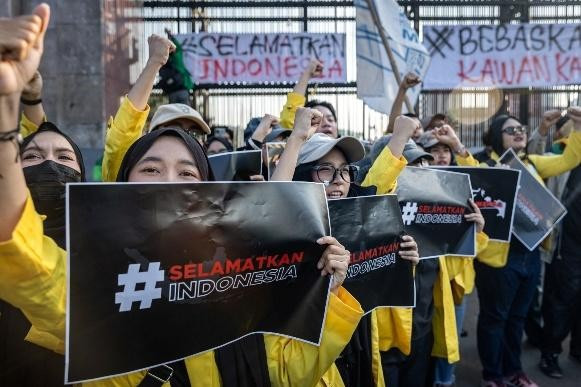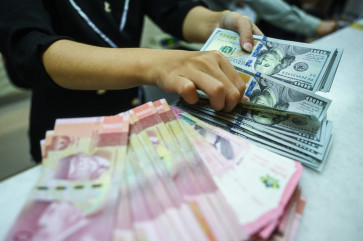Popular Reads
Top Results
Can't find what you're looking for?
View all search resultsPopular Reads
Top Results
Can't find what you're looking for?
View all search resultsThe rupiah's prospects amid US economic pressures
If the US Fed Funds Rate cut will still be postponed until the end of this year, investors may tend to pull out their investments in emerging markets, and it may put pressure once again on the rupiah in the short term.
Change text size
Gift Premium Articles
to Anyone
T
he fluctuation of the rupiah has become the forefront of public concern in Indonesia in the last few months, particularly when it was gradually tumbling to the level of 16,500 per US dollar in mid-June.
The rupiah’s persistent downward trend last month has made it one of the most depreciated Asian currencies apart from the Japanese yen. The signal sent by the United States Federal Reserve last month to postpone the long-awaited Fed Funds Rate cuts has put pressure on emerging market currencies, including the rupiah.
Since then, however, the rupiah has been on a recovery track. In the week ending July 12, the rupiah closed at 16,100 per US dollar. Considering the Fed plans to cut its rate at least once by the end of this year, and most probably more next year, the prospect of the rupiah in general is supposed to be positive until next year.
However, this upward trend may fluctuate along the way depending on the signals sent in each of the Federal Open Market Committee’s (FOMC) future meetings. If the signal sent in the upcoming FOMC meetings remains the same as the previous one, there may be a depreciation, but it should be short-lived.
Based on the data recently released by the US Bureau of Labor Statistics, the Consumer Price Index (CPI) for all urban consumers in June 2024 fell 0.1 percent from the previous month, resulting in a subsequent decline in the year-on-year (yoy) inflation from 3.3 percent in May to 3 percent in June. In addition to that, the US Non-Farm Payroll data and job growth in June was also weaker than expected.
This is the point where the Fed's long period of high interest rates has started to hurt domestic demand in the US. The Fed has held its fed funds rate at 5.25 - 5.50 percent, a 23-year high for nearly 12 months, pushing up the cost of borrowing for businesses and consumers.
When inflation pressure has been easing, manufacturing production costs tend to decline, and non-farm payroll and job markets should be stronger. However, it does not seem to be the case recently, as the purchasing managers index (PMI) for manufacturing has contracted for three consecutive months. This is because the demand for manufacturers’ products has been weakening as a result of the higher-for-longer interest rate policy.



















